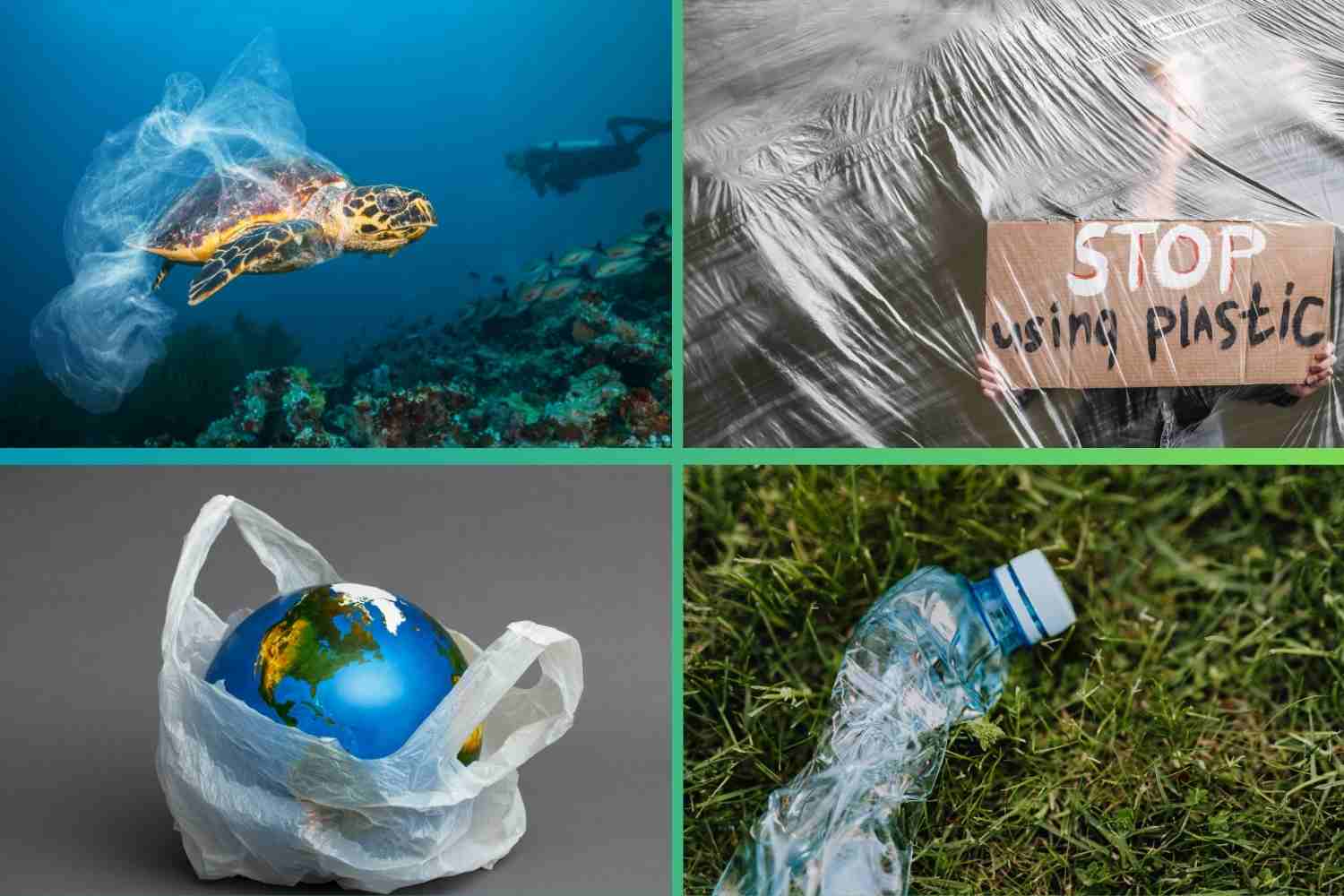Plastic is now inside us — found in human organs and breast milk. On World Environment Day 2025, experts call for a radical global shift to fight plastic pollution.

@Canva
It’s in the oceans, locked in polar ice, drifting through the air, hiding in animal tissue. Plastic pollution is everywhere—from the depths of the Mariana Trench to the summit of Mount Everest. And now, it’s been detected inside the human body: microplastics have been found in the liver, lungs, testicles, and even in breast milk.
That chilling reality takes center stage on World Environment Day 2025, observed every year on June 5 under the auspices of the United Nations Environment Programme (UNEP). This year’s theme — Beating Plastic Pollution — couldn’t be more urgent. We’re far beyond the point of prevention; the time has come to contain and reverse a crisis that has already spun out of control.
Just how bad is it?
In 2024 alone, roughly 400 million metric tons (around 441 million US tons) of plastic waste were produced, according to UNEP. Less than 10% of that waste was actually recycled. The vast majority is either incinerated, landfilled, or released into the environment. It’s a relentless stream that worsens climate disruption and poses an existential threat to biodiversity.
Single-use plastics: the worst offenders
Among the most worrying contributors are single-use plastics — bottles, bags, food containers, cutlery, and packaging. These objects are cheap, light, and convenient. But they’re designed to last mere minutes in your hands and centuries in the environment.
Materials like PET (used for water bottles) and expanded polystyrene (used in packaging) are neither reusable nor easily recyclable. This isn’t a new discovery, yet we’ve failed to take meaningful action.
The plastic-climate connection
What’s less visible is the carbon cost of plastic. In 2020, plastic production — which relies heavily on fossil fuels — generated more than 3% of global greenhouse gas emissions. That figure is expected to rise sharply as demand increases and containment policies lag behind.
Then there’s the issue of degradation. Once released into the environment, plastic slowly breaks down into micro- and nanoplastics, tiny fragments often consumed by fish, seabirds, and marine mammals. Each year, according to ISPRA, around 100,000 marine mammals and 1 million birds die due to plastic ingestion or entanglement.
Projects fighting back
There are efforts underway. Projects like TETHYS4ADRION study how rivers spread plastic waste, while Strong Sea Life focuses on safely retrieving abandoned fishing gear. Educational programs such as “Blue Mission” bring students into the fold, helping them tell environmental stories and build civic awareness.
These efforts matter, but the 2025 World Environment Day underscores a truth that many still overlook: recycling alone won’t save us.
We need a system reboot
If we want to break free from this trap, we must rethink the entire lifecycle of plastic — from production to disposal. That means redesigning products for durability and reuse, drastically reducing single-use items, developing sustainable alternatives, and investing in better waste management systems, especially in low- and middle-income countries.
UNEP estimates that adopting a comprehensive global strategy could prevent over $4.5 trillion (about €4.2 trillion) in environmental and health-related damages by 2040. Let that number sink in.
A global treaty is in the works — and the clock is ticking
The crisis is global. And so must be the solution. From August 5 to 14, 2025, world governments will convene in Geneva for the fifth negotiation session of the Intergovernmental Negotiating Committee on plastic pollution.
The goal is to agree on a legally binding treaty by the end of 2025. But don’t hold your breath. Negotiations are dragging, hindered by conflicting interests between plastic-producing nations, industry giants, and communities suffering the consequences.
As UN Secretary-General António Guterres put it:
“This year we need an ambitious, credible, and fair agreement. One that covers the full life cycle of plastic, through the lens of economies.”
His words are both a warning and a call to arms.
So… what can we do?
While governments hash out the details, there’s still room for individual action. We can ditch single-use items, opt for reusable alternatives, sort waste properly, support responsible brands, and join local cleanup initiatives.
Most importantly, we can demand accountability — that polluters pay for the damage, and that our institutions prioritize a shift toward a society that is less addicted to plastic.
The road ahead won’t be smooth. But it starts with a simple realization: in the plastic choking the world, there’s a piece of our own responsibility — and our power.
Here’s the message António Guterres shared with us all:
“This World Environment Day is focused on solutions to combat plastic pollution.
And rightly so.
Plastic pollution is choking our planet, harming ecosystems, human well-being, and the climate.
Plastic waste clogs our rivers, pollutes our oceans, and kills wildlife.
And as it breaks down into smaller and smaller pieces, it infiltrates every corner of the Earth — from the top of Mount Everest to the bottom of the ocean, from human brains to breast milk.
Yet there is a movement demanding urgent change.
We are seeing growing public engagement…
Steps toward reusability and greater responsibility…
And policies to reduce single-use plastic and improve waste management.
But we must go further, and faster.
In two months, countries will come together to finalize a new global treaty to end plastic pollution.
This year, we need an ambitious, credible, and fair agreement.
One that covers the life cycle of plastic, through the lens of circular economies…
That meets the needs of communities…
That aligns with broader environmental goals, sustainable development targets, and beyond…
And that is implemented fully and swiftly.
I urge negotiators to return to the talks in August determined to bridge their differences and deliver the treaty our world needs.
Together, let us end the scourge of plastic pollution and build a better future for all.”
